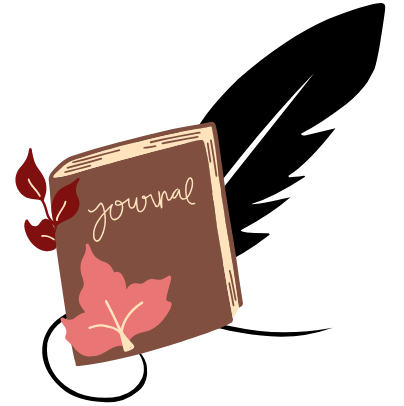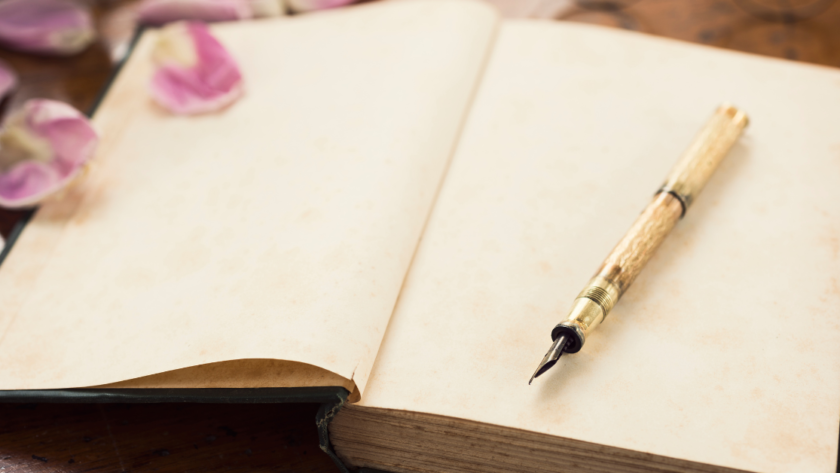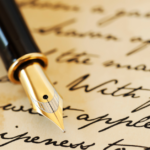Introduction
Fountain pens possess a unique charm that captivates writers and artists alike. The smooth glide of ink across paper, the elegant design of the pen itself, and the connection to centuries of writing tradition all contribute to their enduring appeal.
For those curious about exploring this rewarding hobby, affordable fountain pen starter kits offer an excellent entry point without a hefty financial commitment.
Understanding Fountain Pen Basics
Before diving into specific starter kits, it’s crucial to grasp the basic components and concepts of fountain pens. This knowledge will help you make informed decisions when selecting your first pen and enhance your overall writing experience.
Anatomy of a Fountain Pen
A fountain pen consists of several key components:
- Nib: The metal writing point that comes in contact with the paper.
Nibs come in various sizes (extra-fine, fine, medium, broad) and materials (steel, gold).
- Feed: Sits beneath the nib and controls the flow of ink from the reservoir to the nib.
- Reservoir: Holds the ink, either in cartridge form or as a refillable chamber (converter or built-in piston mechanism).
- Barrel: The main body of the pen that houses the ink reservoir.
- Cap: Protects the nib when not in use and prevents the ink from drying out.
- Clip: Allows you to secure the pen to a pocket or notebook.
Filling Systems
Fountain pens use various methods to store and deliver ink:
- Cartridge: Pre-filled disposable ink containers that simply plug into the pen.
- Converter: A refillable cartridge-like device that allows you to use bottled ink.
- Piston: A built-in filling mechanism that draws ink directly into the barrel.
- Eyedropper: Some pens can be modified to hold ink directly in the barrel.
Nib Sizes and Materials
Nibs greatly influence your writing experience:
- Extra-Fine (EF): Produces very thin lines, ideal for small handwriting or detailed work.
- Fine (F): Slightly thicker than EF, suitable for everyday writing.
- Medium (M): A versatile size that works well for most writing styles.
- Broad (B): Creates thick lines, great for signatures or calligraphy.
Nibs are typically made of stainless steel or gold. Steel nibs are durable and affordable, while gold nibs offer more flexibility and a softer writing feel.
Factors to Consider When Choosing a Starter Kit
When selecting your first fountain pen starter kit, keep these factors in mind:
- Pen Design: Consider both aesthetics and ergonomics.
The pen should feel comfortable in your hand during extended writing sessions.
- Nib Size: For beginners, a fine or medium nib often provides the best balance of smoothness and control.
- Filling System: Cartridge/converter systems offer versatility, while piston fillers provide larger ink capacity.
- Included Accessories: Look for kits that include ink cartridges, a converter, and perhaps a bottle of ink to get you started.
- Price: While affordability is key for a starter kit, avoid extremely cheap pens that may provide a poor writing experience.
- Brand Reputation: Stick to well-known brands with a history of producing quality fountain pens.
Popular Affordable Starter Kits
Now, let’s explore some of the most highly-regarded affordable fountain pen starter kits available:
1. Pilot Metropolitan Starter Kit
The Pilot Metropolitan has earned a reputation as one of the best entry-level fountain pens on the market. It’s brass body provides a premium feel, while it’s reliable performance makes it suitable for daily use.
Kit Contents:
- Pilot Metropolitan fountain pen
- Squeeze converter
- Ink cartridge
- Instruction manual
Key Features:
- Durable brass body with a variety of finishes
- Smooth-writing medium nib (fine nib also available)
- Compatible with Pilot/Namiki ink cartridges and converters
- Excellent build quality for the price
The Metropolitan’s medium nib offers a great all-around writing experience, suitable for most paper types and writing styles. It’s metal construction gives it a substantial feel in hand, making it feel more expensive than it’s price tag suggests.
2. Lamy Safari Starter Set
The Lamy Safari is a modern classic, known for it’s distinctive design and reliable performance. Made from durable ABS plastic, it’s available in a wide range of colors to suit every taste.
Kit Contents:
- Lamy Safari fountain pen
- Z28 converter
- Pack of Lamy T10 ink cartridges
- Instruction manual
Key Features:
- Ergonomic grip section guides fingers into the correct writing position
- Interchangeable nibs for easy customization
- Durable ABS plastic construction
- Large ink window for monitoring ink levels
One of the Safari’s standout features is it’s ergonomic grip, which helps guide your fingers into the correct writing position. This makes it an excellent choice for those new to fountain pens or looking to improve their handwriting.
3. TWSBI Eco Starter Kit
For those interested in a larger ink capacity and a unique filling system, the TWSBI Eco is an excellent choice. This pen uses a piston-filling mechanism, allowing you to draw ink directly from a bottle.
Kit Contents:
- TWSBI Eco fountain pen
- Wrench tool for disassembly
- Silicone grease for maintenance
- Instruction manual
Key Features:
- Large ink capacity with piston-filling mechanism
- Transparent demonstrator body for viewing ink levels
- Smooth-writing steel nib available in various sizes
- Fully disassemblable for thorough cleaning and maintenance
The Eco’s transparent body (known as a demonstrator) let’s you see the ink level at a glance, adding a fun visual element to your writing experience. It’s piston-filling system provides a generous ink capacity, making it ideal for those who write frequently or enjoy experimenting with different inks.
4. Platinum Preppy Fountain Pen Set
If you’re looking for most value and the ability to experiment with different nib sizes, consider the Platinum Preppy set. These pens are incredibly affordable, making them perfect for trying out various writing styles.
Kit Contents:
- Multiple Platinum Preppy fountain pens with different nib sizes
- Ink cartridges for each pen
- Instruction manual
Key Features:
- Incredibly affordable price point
- Available in many nib sizes (EF, F, M)
- Slip-and-seal cap prevents ink from drying out
- Can be converted to an eyedropper-fill pen for increased ink capacity
The Preppy set allows you to experience different nib sizes without a significant investment. This makes it an excellent choice for those who are still discovering their preferred writing style or nib width.
Getting Started with Your New Pen
Once you’ve chosen your starter kit, it’s time to begin your fountain pen journey. Here are some tips to help you get started:
1. Read the Instructions
Carefully read the instructions that come with your pen. Each model may have slightly different filling and maintenance procedures.
2. Priming the Feed
If your kit includes cartridges, start with those for simplicity. Insert a cartridge according to the instructions, then hold the nib down on a piece of scrap paper until ink begins to flow.
This process, known as priming the feed, may take a few minutes for a new pen.
3. Using Bottled Ink
If you’re using bottled ink with a converter, take your time with the filling process to avoid messes. Dip the nib fully into the ink bottle, then operate the converter mechanism slowly to draw up the ink.
4. Proper Pen Care
Always cap your pen when not in use to prevent the nib from drying out. Store your pen either horizontally or with the nib pointing upwards to prevent ink leakage.
5. Writing Technique
Hold your fountain pen at a 45-degree angle to the paper for optimal ink flow. Unlike ballpoint pens, fountain pens require little to no pressure when writing – let the pen’s weight do the work.
Exploring Inks and Paper
One of the joys of fountain pen use is experimenting with different inks and papers. While your starter kit will likely include basic ink, don’t be afraid to branch out.
Inks
Fountain pen inks come in a vast array of colors and properties. Some popular ink brands include:
- Diamine
- Noodler’s
- Iroshizuku (by Pilot)
- J. Herbin
- Waterman
Many companies offer ink sample programs, allowing you to try a variety of colors and properties without committing to full bottles. This is an excellent way to learn your preferences without breaking the bank.
Paper
Not all paper is created equal when it comes to fountain pens. Look for fountain pen-friendly options that resist feathering (ink spreading along paper fibers) and bleed-through (ink showing through to the other side of the page).
Some popular fountain pen-friendly paper brands include:
- Rhodia
- Clairefontaine
- Tomoe River
- Leuchtturm1917
- Midori
Experimenting with different paper types will help you appreciate the nuances of your pen and ink combinations.
Maintenance and Troubleshooting
Regular maintenance will keep your fountain pen writing smoothly. Here are some tips:
Routine Cleaning
Flush your pen with water every few weeks, or whenever you change ink colors. This prevents ink buildup and confirms consistent performance.
Addressing Common Issues
- Skipping or inconsistent ink flow: Often solved by a thorough cleaning. If the problem continues, check the nib for misalignment or damage.
- Hard starts: Make sure the cap is securely fastened when not in use. If the problem continues, try cleaning the pen or changing to a wetter ink.
- Leaking: Check that the cartridge or converter is properly seated. Ensure you’re not storing the pen nib-down for extended periods.
Nib Adjustments
If your pen writes too wet or too dry, you may need to adjust the nib. This is an advanced technique, so it’s best to practice on inexpensive pens before attempting it on your main writing instrument.
Many fountain pen enthusiasts learn to make minor nib adjustments themselves, but for significant issues, consider seeking help from a professional.
Advancing Your Fountain Pen Experience
As you become more comfortable with your starter pen, you might find yourself curious about other aspects of the fountain pen world. Here are some ways to deepen your involvement:
Join the Community
The fountain pen community is large and welcoming. Consider joining online forums or local pen clubs to share experiences and learn from others.
Some popular online communities include:
- r/fountainpens on Reddit
- The Fountain Pen Network
- FPGeeks Forum
Attend Pen Shows
Pen shows are events where enthusiasts, collectors, and vendors gather to buy, sell, and discuss fountain pens. These can be great places to try out pens, meet like-minded people, and learn more about the hobby.
Explore Vintage Pens
Once you’re comfortable with modern fountain pens, you might want to explore vintage models. These pens often offer unique writing experiences and can be a fascinating way to connect with writing history.
Practice and Improve Your Handwriting
Many fountain pen enthusiasts find that their handwriting improves with regular use. Consider practicing different writing styles or even trying your hand at calligraphy.
Practice Exercises
To get the most out of your new fountain pen, try these exercises:
- Write the alphabet in both uppercase and lowercase, paying attention to how the pen feels and how the ink flows.
- Practice writing at different speeds and pressures to find what works best for you and your pen.
- Try writing on different types of paper and observe how it affects ink behavior.
- Experiment with holding your pen at different angles to see how it impacts your writing.
- Keep a daily journal to build consistency in your fountain pen use.
Frequently Asked Questions
What is the best fountain pen for beginners?
The Pilot Metropolitan, Lamy Safari, and TWSBI Eco are all excellent choices for beginners. They offer reliable performance, good build quality, and a smooth writing experience at an affordable price point.
How do I fill a fountain pen with ink?
The method depends on your pen’s filling system. For cartridge pens, simply insert a new cartridge.
For converter pens, dip the nib into an ink bottle and operate the converter mechanism to draw up ink.
Piston-fill pens work similarly to converters but have the mechanism built into the pen body.
How often should I clean my fountain pen?
It’s a good idea to clean your fountain pen every 4-8 weeks, or whenever you change ink colors. More frequent cleaning may be necessary if you use heavily pigmented or shimmer inks.
Can I use any ink in my fountain pen?
It’s best to use inks specifically formulated for fountain pens. Avoid India ink, calligraphy ink, or other non-fountain pen inks as they can clog your pen.
Why is my fountain pen skipping or not writing smoothly?
Skipping can be caused by a dirty feed, misaligned nib, or incompatible ink-paper combination. Try cleaning your pen first.
If the problem continues, check the nib alignment or try a different ink or paper.
What’s the difference between a fine and medium nib?
A fine nib produces a thinner line than a medium nib. Fine nibs are good for small handwriting or writing on lower-quality paper, while medium nibs offer a smoother writing experience and show off ink properties better.
How long does a bottle of fountain pen ink last?
This varies greatly depending on how often you write and how much ink your pen holds. A 50ml bottle of ink can last anywhere from a few months to over a year for the average user.
Can left-handed people use fountain pens?
Absolutely! While some left-handed writers may need to adjust their grip or writing angle, many lefties enjoy using fountain pens.
Some brands even offer left-handed specific nibs.
What’s the best paper for fountain pens?
Clairefontaine, Rhodia, and Tomoe River are all excellent choices for fountain pen use. Look for paper that’s smooth and resistant to feathering and bleed-through.
How do I store my fountain pen when not in use?
Store your pen either horizontally or with the nib pointing upwards. Always cap the pen to prevent the nib from drying out.
For long-term storage, clean the pen thoroughly and store it empty.
- Consider factors like nib size, filling system, and included accessories when choosing a kit.
- Popular starter kits include the Pilot Metropolitan, Lamy Safari, TWSBI Eco, and Platinum Preppy set.
- Regular maintenance and proper care will ensure your pen performs well for years to come.
- Experimenting with different inks and papers can greatly enhance your fountain pen experience.




